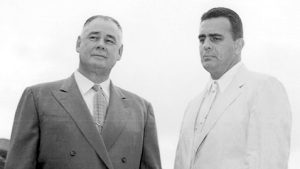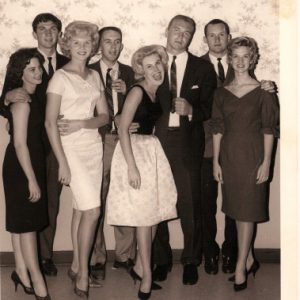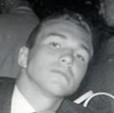I Was a Teenage Volunteer!
My time as a University of Tennessee football player
The University of Tennessee is currently one of the top five football teams in the nation, a far cry from my experience as a Vol football player some sixty years ago.
* * *
Throughout my time as a dedicated football player at Tullahoma (TN) High School, I listened avidly to University of Tennessee football games on my car radio, envisioning myself as Cotton Letner, an end on the Vols football team. So I was ecstatic when UT assistant football coach Skeeter Bailey drove into town, wined and dined me, then offered me a full football scholarship to play for the UT Volunteers. Well, actually he bought me a hamburger, fries, and a milk shake at the Dairy Bar. Nonetheless, I gratefully accepted his offer.
My introduction to the University of Tennessee was jarring to say the least. Mom, Dad, my brother Butch, sister Nancy, and my girlfriend Lynn all accompanied me from Tullahoma to Knoxville on August 31, 1961. This was a momentous occasion for me. For the first time in my life I’d be separated from my family and living far away from the little town I’d called home. All of the adults were a bit sad, and Lynn was teary eyed, perhaps sensing that I was not only leaving Tullahoma, but that I was leaving her, too.
Our entourage pulled up to the jock dorm, East Hall, which was located under the east side of the football stadium—Shields-Watkins Field, now called Neyland Stadium. We unloaded and carried my clothing, toiletries, and other gear up to my room on the third floor of the dorm, where we met my roommate, Branley Owen. Branley would flunk out after the first quarter and later would hold the speed record for hiking the entire Appalachian Trail.
Back down in the parking lot, we said a long goodbye, they were off, and I was on my own, a situation I’d dreamed of, though now that it was here, was a bit unnerving. My first meal that evening in athletes’ dining hall on the first floor of East Hall did little to ease my anxiety. A hundred or so guys milled around, some weighing as much as two-hundred-forty pounds, many with five o’clock shadows, some speaking in unfamiliar accents. “These guys are men,” I remember thinking. “What the hell am I doing here?”
Two-a-day practices began the next day, September 1, 1961, the first starting at 9:00 A.M., the second at 3:00 P.M. In those days freshmen weren’t eligible for the varsity squad, so we practiced separately on our own field and played our own three-game mini-season. Several times a week, however, we went up to the varsity practice field where we served as cannon fodder for the first and second team offense.
At the time there was no limit on the number of athletic scholarships that could be given, so the coaches brought in fifty or so freshmen on scholarship and invited approximately another twenty to walk-on and possibly be offered a scholarship if they played well. While many of the freshmen showed great promise on the athletic field, a large percentage lacked the education and the discipline to be successful academically. During the first quarter of classes, approximately fifty percent of the freshmen football players failed to make the grade point average required to continue at UT. While I’d made the dean’s list, half of my teammates flunked out.
Our freshman coaches included former players who were finishing their degrees and those who hoped to move up to a varsity coaching position. One of our coaches was Bill Majors, a member of the famed Majors family who’d played at UT in the shadow of his brother, Johnny Majors, an all-star tailback who lost out (unfairly according to UT partisans) only to Paul Hornung in the contest for the 1956 Heisman Trophy.
The grueling twice-daily practices continued day after day, and I was ultimately named a starter at end on the freshman team. That meant I was one of the top eleven players on the freshman team since we played both offense and defense due to limited substitution rules in those days. It seemed that the coaching staff had high hopes for me. One day during morning practice the legendary athletic director General Robert Neyland, who’d coached at West Point prior before coming to coach at UT in 1925, came down to the freshman practice field and briefly spoke to head freshman coach Dale Haupt. Coach Haupt pulled me out of a drill and said, “The General wants to see you.” “See me?” I thought. “What the hell for?” I loped toward him, he looked me up and down, grunted, then turned, and without a word, ambled back up to the varsity practice field. To this day I don’t know what that little episode was all about. The fantasy I later made up was that, just as Neyland had hand-selected the current UT head football coach, Bowden Wyatt, as his successor, the General was checking to see if I was worthy enough to continue the lineage.
At the end of spring practice in 1962, as a rising sophomore, I was listed as the number three tight end on the varsity squad, which meant I was one of the top thirty-three players on the varsity team. If things had taken their normal course, I would have seen playing action my junior year and started by my senior year. However, destiny stepped in.
I was spending the summer of ‘62 lifeguarding and drinking beer when one evening in late July I got a call from Coach Wyatt. After a bare minimum of niceties, Wyatt asked, “You been running, Mulkey?”
“Yeah, coach, I have,” I replied, trying to sound like I wasn’t intoxicated.
“How much do you weigh?”
“220, Coach.”
“Hell, you ain’t been running much!” (A pretty fair assessment since I’d put on fifteen pounds over the summer.)
Coach Wyatt then informed me that I was to report early for fall practice (though this ran counter to NCAA rules) and to get myself to Knoxville within a few days.
When I arrived, I found myself among four other players who were practicing surreptitiously in the old basketball gym. It seemed that a shortage at fullback had developed at that position when one player failed to recover from an injury and Jack Nichols got kicked out of school for stealing and selling textbooks for beer money. So, we were being trained to fill in. I also found myself on a steak and salad diet to get my weight down.
Having never played in the backfield, my switch to fullback was less than successful. But by the time the coaches had made that decision, the regular season was about to begin. So, I was redshirted and watched players at my end position move ahead of me.
Though football was more like a tedious slog at UT than a passionate athletic pursuit, life on the redshirt squad was pretty laid back. While the varsity did calisthenics at the beginning of each practice, we mockingly did wacky warm-ups of our own. Then we spent most of practice simulating the next opponent’s passing attack against the varsity defense, completing most of the passes thrown against the first and second team defenders. To join in the fun, I moved myself back to end. When a play was called on which I was the primary receiver, I inserted myself into the line-up. Otherwise I let a player further down the pecking order run the route. On one play as the primary receiver I was running a crossing route on which the football was underthrown. I stopped on a dime while the defender kept going, reached back, and made a challenging one-handed catch. Coach Wyatt, who had been standing nearby, looked at me, smiled broadly, shook his head in disbelief, and chuckled slightly.
In addition, we redshirts entertained ourselves by calling plays in the huddle such as “Get (Pat) Downey” (or whatever other varsity player had fallen into our disfavor). When the ball was snapped, everyone on the redshirt team, except the ball carrier, threw themselves at Downey, knocking him down and piling on until the whistle blew. It was a riot (literally and figuratively), though the coaches didn’t seem to be laughing very much, especially when our target was Pat Canini, the starting varsity fullback, whose jaw was broken during a similar episode.
One day while my redshirt pals and I were defending against the varsity first and second team offense, George Canale, the second team tailback, didn’t run the ball as the play designated. When the varsity players went back to the huddle, Coach Harvey Robinson expressed his frustration by walking behind George and kicking him in the rear. Canale whirled around and punched Robinson in the jaw. After the initial shock, practice went on as if nothing had happened, and there were no repercussions, probably because his brothers, starting end Whit Canale and reserve wingback Frank Canale, both threatened to leave the team if their brother were punished in any manner.
The fact that the coaching staff tolerated such misbehavior was symptomatic of the declining fortunes of the UT football program during that time. General Neyland died on March 28, 1962, and Coach Wyatt wasn’t hired as athletic director because he lacked a college degree. Wyatt was rumored to have a drinking problem, and when he shoved a sportswriter into the swimming pool at a Southeastern Conference athletic gathering, he almost certainly precipitated his termination as head coach. Plus, a losing season certainly didn’t help Coach Wyatt’s status. Running the outdated single wing offense and predictable 6-2-2-1 defense, Tennessee had gone 4-6 that season, beating only weak sisters Chattanooga, Wake Forest, Tulane, and Vanderbilt.
Spring quarter 1963, with things other than academics on my mind, including my girlfriend’s abortion, I made a 0.0 grade point average. Needless to say, the football coaching staff was not pleased and unceremoniously kicked me off the team. Actually they said I could come back in the fall and compete for a scholarship. Thoroughly disillusioned with big-time football, especially during this low point in UT’s proud gridiron history, I essentially told them, “Fuck you.”
I thought I’d try life as a regular student for a while. However, no longer enjoying the status I once had on campus at UT, I considered a return to the gridiron—for the joy of playing the game and the team camaraderie, of course. But primarily, though I was oblivious of it at the time, because my ultra-masculine identity was so inextricably linked with being a football player. I wanted a do-over, so I sought out a college where I could play football and receive the perks I’d become accustomed to for doing so.
So I contacted Coach Shirley Majors, the head football coach at Sewanee: The University of the South, a small men’s liberal arts college located on a domain of 13,000 acres on the Cumberland Plateau in Tennessee. After visiting the campus at Coach Majors invitation, meeting with him, and getting to know some of the players, I decided to transfer to Sewanee for the fall 1964 semester. But that’s a story for another time.








Great story, Bro! Talk to you soon.
Love
Thanks a lot, Nancy. And yes, let’s talk soon.